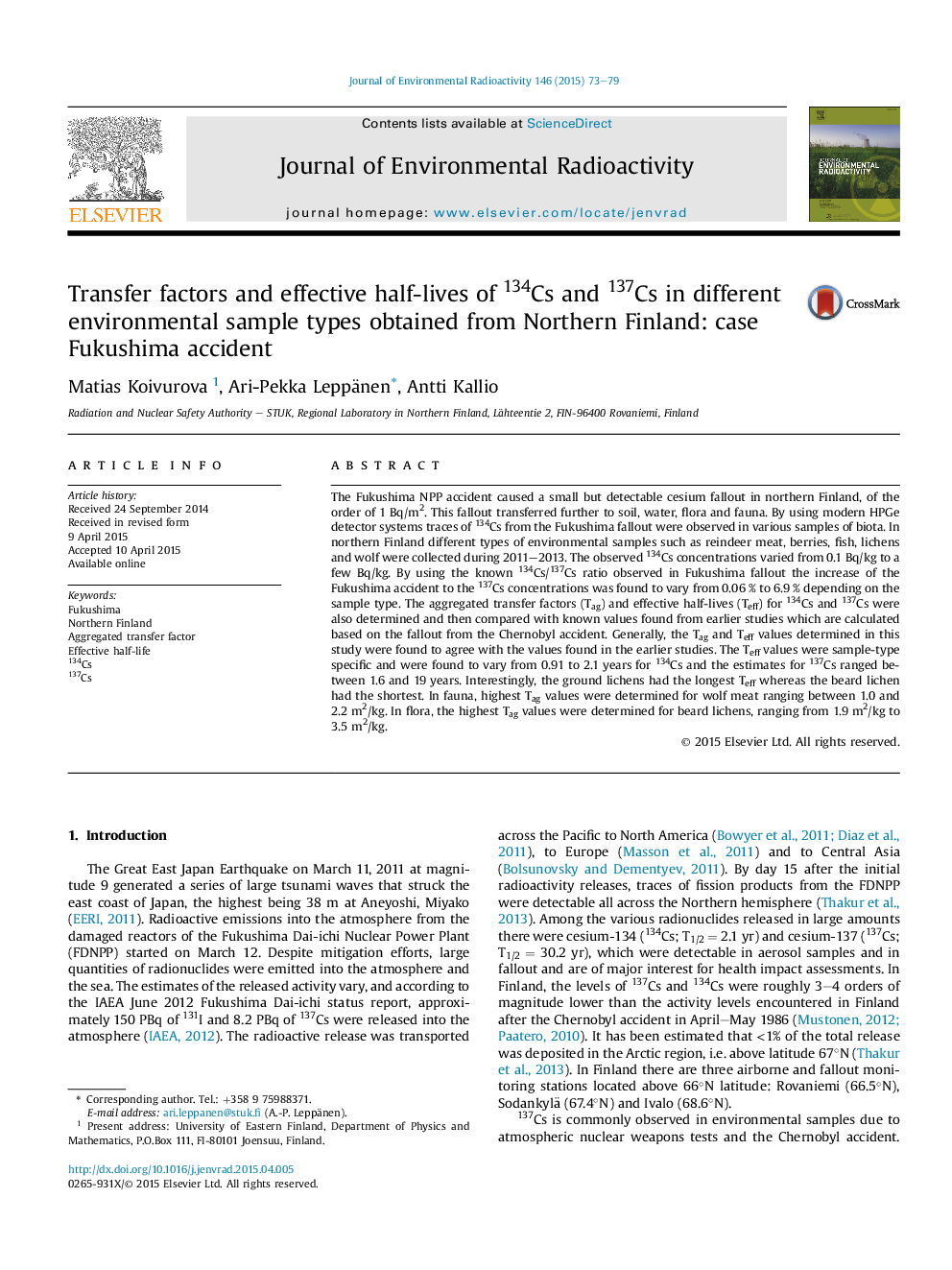| Article ID | Journal | Published Year | Pages | File Type |
|---|---|---|---|---|
| 8082137 | Journal of Environmental Radioactivity | 2015 | 7 Pages |
Abstract
The Fukushima NPP accident caused a small but detectable cesium fallout in northern Finland, of the order of 1Â Bq/m2. This fallout transferred further to soil, water, flora and fauna. By using modern HPGe detector systems traces of 134Cs from the Fukushima fallout were observed in various samples of biota. In northern Finland different types of environmental samples such as reindeer meat, berries, fish, lichens and wolf were collected during 2011-2013. The observed 134Cs concentrations varied from 0.1Â Bq/kg to a few Bq/kg. By using the known 134Cs/137Cs ratio observed in Fukushima fallout the increase of the Fukushima accident to the 137Cs concentrations was found to vary from 0.06 % to 6.9 % depending on the sample type. The aggregated transfer factors (Tag) and effective half-lives (Teff) for 134Cs and 137Cs were also determined and then compared with known values found from earlier studies which are calculated based on the fallout from the Chernobyl accident. Generally, the Tag and Teff values determined in this study were found to agree with the values found in the earlier studies. The Teff values were sample-type specific and were found to vary from 0.91 to 2.1 years for 134Cs and the estimates for 137Cs ranged between 1.6 and 19 years. Interestingly, the ground lichens had the longest Teff whereas the beard lichen had the shortest. In fauna, highest Tag values were determined for wolf meat ranging between 1.0 and 2.2Â m2/kg. In flora, the highest Tag values were determined for beard lichens, ranging from 1.9Â m2/kg to 3.5Â m2/kg.
Related Topics
Physical Sciences and Engineering
Energy
Nuclear Energy and Engineering
Authors
Matias Koivurova, Ari-Pekka Leppänen, Antti Kallio,
